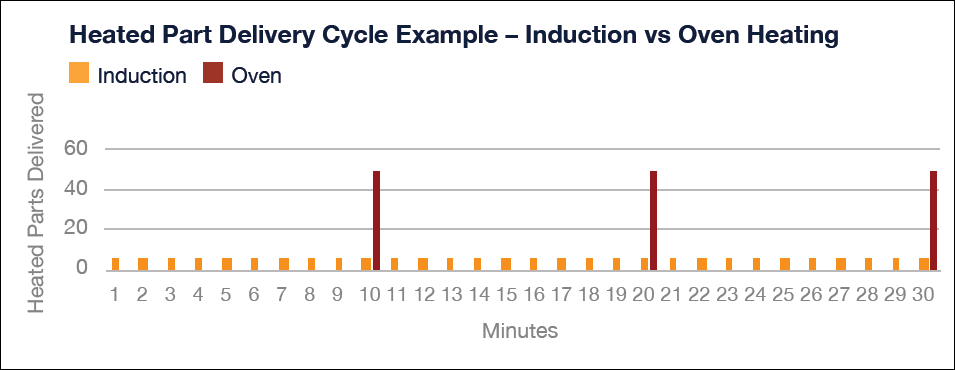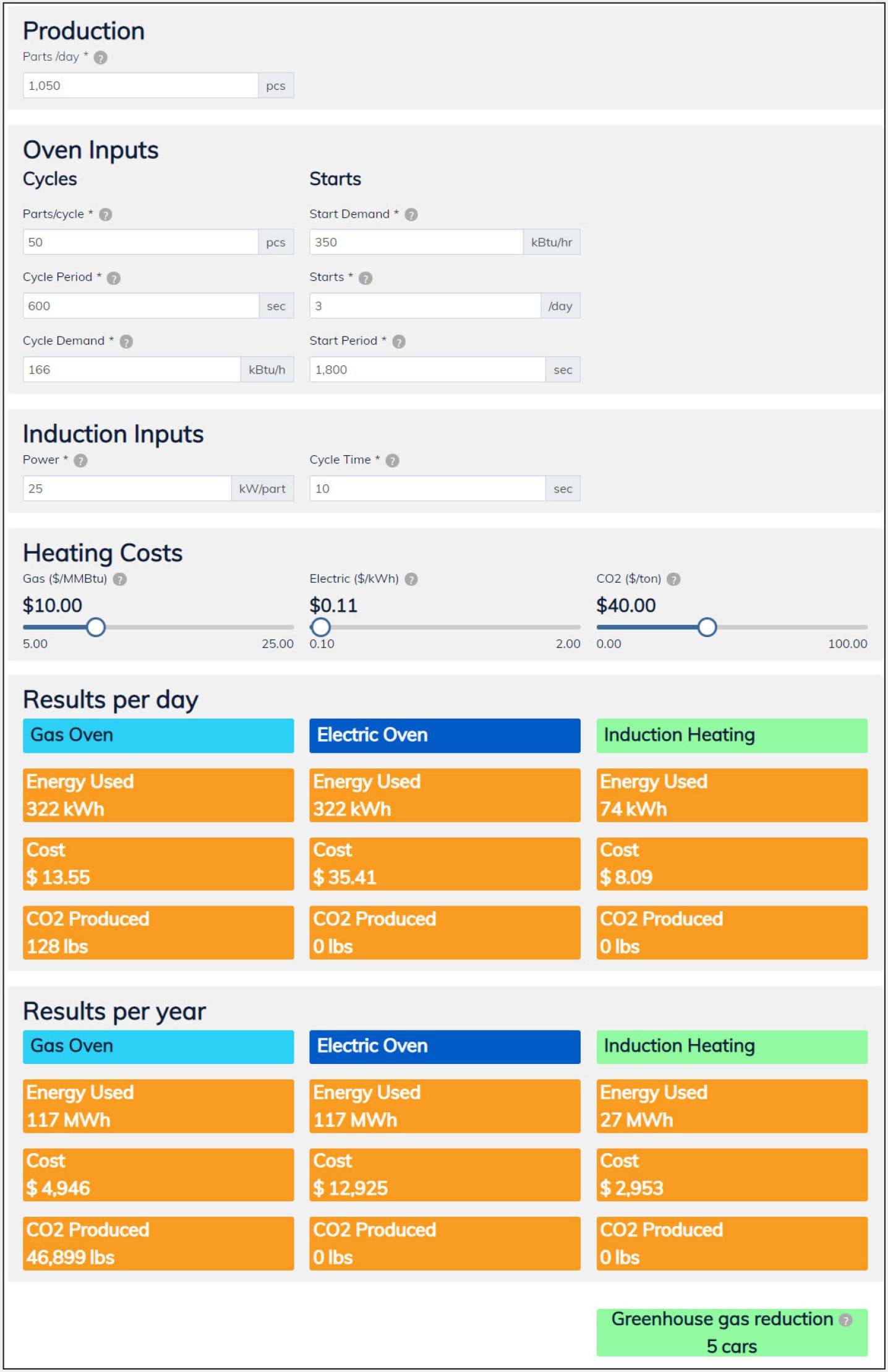So Why is Induction a Green Technology?
Induction heating is better for employees and the environment.
Along with the environmental benefits, induction heating offers many benefits to your employees and business, as it eliminates smoke, waste heat, noxious emissions, and loud noise.
Many processes that produce emissions can be converted to induction heating including:
- Flame preheating
- Gas fired oven heating
- Welding torches for joining
- Flame brazing
- Flame melting
- Flame hardening
- Flame shrink fitting
Induction Heating is a Safer Technology
In addition to the improved air quality that comes with induction heating, there are other significant employee safety benefits. They include:
- Reduction in risk of contact burns:Since induction heats only a zone of the workpiece, there are limited hot areas which lessens the risk of employee contact. This significantly reduces the risk of contact burns when compared to the outside of ovens or exhaust systems from gas heating.
- Zero explosive gases:Induction uses electricity for the energy source. This eliminates the handling of high-pressure explosive gasses. Often these gasses are transported in a hot crowded environment which increases the risk of catastrophic failure.
- No Ultraviolet (UV) Exposure: Unlike flame heating, induction releases no UV into the environment. This eliminates the risk of UV damage that can occur to the skin and eyes of employees from flame heating sources.
Of course, with induction heating there are safety considerations. Proper installation, signage, employee training, personal protective equipment and lockout procedures can help mitigate risk.
Induction Heating is More Efficient
Induction is a uniquely energy-efficient heating process that converts 70-90% of the energy consumed into useful heat. When compared to electrical ovens, which are generally only 45% energy efficient, induction heating has two times the overall efficiency. Gas oven efficiency is typically only 25-30% energy efficient, indicating induction can be up to three times as efficient. Since induction requires no warm-up or cool-down cycle, start up and shutdown heat losses are eliminated. The repeatability and consistency of the induction heating process make it highly synergistic with energy-efficient automated systems.
Induction Supplies More Consistent Output than Oven Heating

The use of constant flow induction heating results in significantly higher efficiency than batch oven heating.
Losses in both energy and time due to oven loading and unloading are eliminated with induction heating. Induction enables a consistent flow of parts which is even more critical if onward steps in the manufacturing process require heated parts. This reduces the heat loss from the part when it reaches the next step thus increasing the overall efficiency of the cycle. This overall savings is not only realized in production efficiency but also results in the better use of heating energy.
Induction Versus a Gas Oven is Cost Effective

In this scenario, a client using an oven switches to induction. The environmental benefits are considerable.
Given the inputs you see here, induction heating saves 128 pounds of CO2 per day and over 46,899 pounds per year. This is the equivalent of removing five internal combustion engine cars from the road.
The cost savings of induction heating compared to a gas oven are often considerable too, and the difference compared to an electric oven is typically even more significant.
The cost variables depend on local rates, so we recommend using Energy Calculator, to apply your current rates.
Induction heating wastes little heat due to the direct transfer of energy to the work piece, resulting in significant energy savings.

Commitment to Sustainability
The United Nations has several sustainability goals, and our solutions are in alignment with those goals. Goals 12 and 13 are worthy of particular emphasis when assessing the benefits of induction heating for sustainability:
- 12 – Responsible Consumption and Production:Our induction heating solutions increase energy efficiency and reduce pollution, thus helping manufacturers achieve this sustainability goal. And, at our facility, we have implemented energy efficient lighting, motion detectors, programmable thermostats, and we participate in sortable recycling to maximize yield.
- 13 – Climate Action:Induction replaces inefficient and sometimes pollution-laden solutions like torches/flame and gas ovens, which benefits the environment. This is in alignment with a “Green Transition” and “Investing in More Sustainable Solutions.”
Is Induction Right for My Process?
Po zapoznaniu się z korzyściami dla środowiska płynącymi z nagrzewania indukcyjnego, które mogą skutkować oszczędnością mediów, pojawia się pytanie. Czy indukcja jest odpowiednia dla Państwa?
Now that you have learned about the environmental benefits of induction heating that can result in utility savings, the question becomes is induction right for you? Induction is particularly ideal when you have a high-volume process that requires consistent part quality. That said, there are many scenarios where induction can be optimal.





Leave a comment